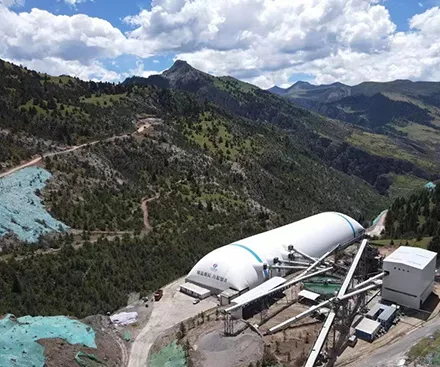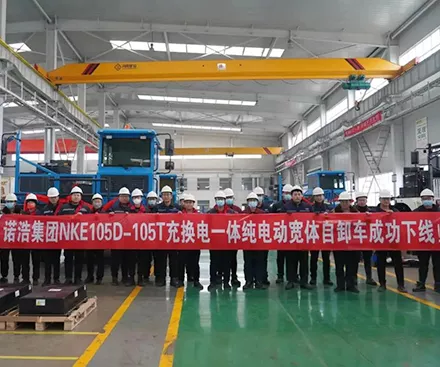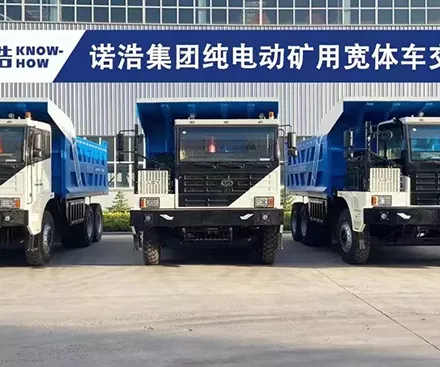The mining industry is at a critical crossroads. Pressured by environmental regulations, increasing fuel costs, and the global demand for carbon reduction, companies are rethinking how they power their operations. One of the most transformative shifts is the electrification of mining fleets, especially the replacement of diesel-powered haul trucks with large-capacity electric dump trucks.
Among the electrification solutions gaining rapid adoption are 105 ton electric dump trucks—a category that offers a powerful blend of hauling capacity, operational efficiency, and sustainability. This article explores real-world case studies showcasing the impact of these trucks in large-scale mining operations, and how their adoption is reshaping mine economics, logistics, and environmental strategy.
Lower Operating Costs: Electric motors are far more efficient than diesel engines, with significantly lower fuel and maintenance costs.
Zero Emissions at Source: Reduces on-site greenhouse gas (GHG) emissions and supports environmental compliance.
Regenerative Braking: Captures energy during downhill runs, improving efficiency.
Reduced Noise and Heat: Improves safety and worker comfort, especially in underground or high-temperature environments.
Grid Integration and Renewable Synergy: Electric trucks can be powered by solar or wind energy in off-grid mining camps.
A major copper mine in Chile faced regulatory pressure to reduce its annual emissions by 30% by 2026. The site operated a fleet of 45 diesel trucks, each consuming an average of 250,000 liters of fuel per year.
In 2023, the company introduced six 105 ton electric dump trucks in a pilot project, supplied with fast-charging infrastructure and solar integration for daytime operations.

Fuel savings: ~$1.2 million per truck per year
CO₂ emissions reduction: 300 tons per truck annually
Downtime reduction: 22% improvement due to fewer mechanical breakdowns
Noise pollution: Decreased by over 60% across critical haulage routes
Truck operators noted smoother rides, higher torque for inclines, and lower fatigue during long shifts—thanks to automatic controls and the absence of gear shifting.
This iron ore operation runs 24/7 across a 75 km² open-pit area. Haul roads are long and steep, making it a challenging environment for electrification.
Four 105 ton electric mining dump trucks were deployed with a focus on regenerative braking on long downhill routes. Charging was powered using a hybrid solar-diesel microgrid.
Operational cost per ton: Decreased by 18%
Regenerative braking efficiency: Recovered up to 22% of energy
Brake system maintenance: Cut by 50% due to less wear
Battery cycle performance: 93% retention after 12 months (~1,400 charge cycles)
This site proved that even remote, rugged environments can benefit from heavy-duty electric dump trucks, provided that smart energy planning is in place.
Lithium, a core material for battery manufacturing, is under increasing scrutiny for how it's mined. This lithium mining operator aimed to make its supply chain cleaner and more appealing to downstream EV and battery manufacturers.
The company partnered with a local OEM to trial ten 105 ton electric dump trucks, designed with modular lithium iron phosphate (LFP) battery packs and AI-based predictive maintenance.
GHG certification: Achieved “Low-Carbon Mining Certification” from a regional energy agency
Battery swap time: Reduced to under 12 minutes via robotic arms
Monthly fuel savings: Over $800,000 across the 10-truck fleet
Customer impact: Two major battery makers signed preferential contracts after ESG score improvements
Despite the success stories, electrifying mining fleets using heavy-duty electric dump trucks comes with challenges:
Upfront investment: The purchase cost of an electric truck can be 30–50% higher than its diesel equivalent.
Charging infrastructure: Requires robust planning, especially for remote or off-grid locations.
Battery degradation in cold climates: Performance can drop if thermal management is insufficient.
Load variability: Certain haul profiles may not fully exploit the benefits of regenerative braking.
Battery capacity: Typically ranges from 700 kWh to 1 MWh
Motor output: ~1,200 kW peak power
Chassis: Reinforced for mine-grade durability
Smart telemetry: Real-time diagnostics, energy usage, and predictive maintenance alerts
Battery swapping or fast-charging: Depending on mine layout and operational cadence
These machines are designed to perform in harsh conditions—whether arid deserts, high-altitude mines, or icy terrains—with battery heating/cooling systems and IP67-rated electronics.
The transition from diesel to electric in mining fleets—especially with trucks in the 100+ ton range—has significant environmental implications:
Annual emissions reduction per truck: Up to 300–500 tons CO₂e
Noise reduction: Up to 70% lower than diesel counterparts
Particulate matter elimination: Reduces worker exposure to harmful diesel exhaust
Supports ESG reporting: Electric fleets align with Scope 1 & 2 emission targets under GRI/SASB frameworks
With fuel savings and reduced maintenance, most mining operators report a return on investment within 3 to 4 years for electric dump trucks.
Over a 10-year lifespan, electric trucks often show 25–35% lower total cost of ownership compared to diesel trucks—even when accounting for battery replacement in years 5–7.
In some countries, tax credits, carbon trading, or green finance instruments are available to subsidize part of the transition cost.
Autonomous Electric Trucks: Combining autonomy with electrification for maximum operational efficiency.
Hydrogen-Electric Hybrids: Being explored for ultra-long-distance hauling.
Battery-as-a-Service (BaaS): OEMs offering battery replacement programs and usage-based pricing.
Fleet-wide AI Optimization: Using machine learning to schedule charging, reduce idle time, and extend battery life.
As battery technologies evolve and power generation becomes cleaner, the case for large-scale electrification becomes even more compelling.
The adoption of 105 ton electric dump trucks in mining is more than a technological trend—it's a strategic move toward resilient, cost-efficient, and environmentally responsible operations. These case studies offer tangible evidence that electrification is not only possible in large-scale mining but also profitable and sustainable.
Leverage the proven performance of 105 ton electric dump trucks backed by real-world data. Whether you're operating in copper, iron ore, lithium, or coal—learn how leading mines are transitioning their fleets with technology that works.
Looking to future-proof your haulage operations? Discover the KNOW-HOW that leading mining companies already trust.

Jul. 23, 2022
View More
Jun. 15, 2022
View More
Jun. 01, 2022
View More